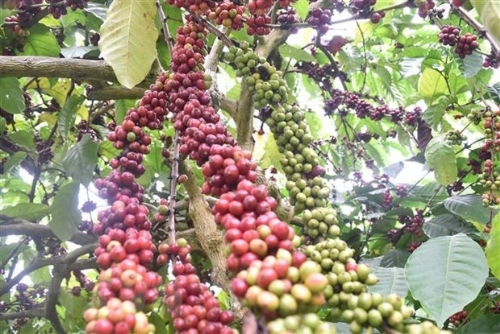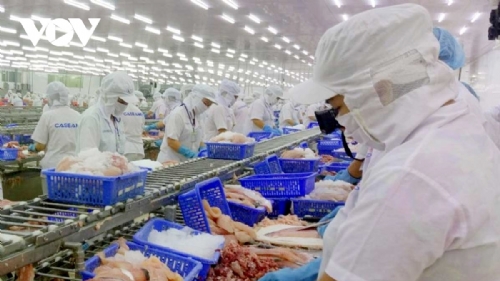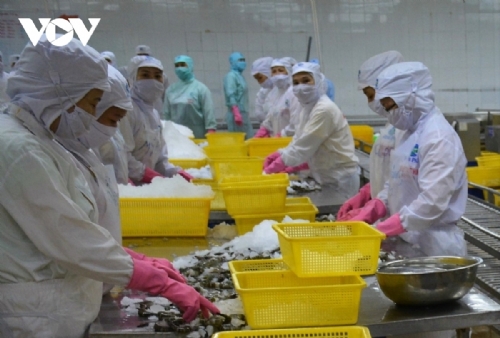Vietnam Export Turnover to Soon Reach US$200 Billion
Tuesday, November 6, 2018 11:32
.jpg)
According to General Department of Vietnam Customs, the total export turnover of the country reached US$189.604 billion as of October 15. It is most likely that this number will amount to US$200 billion shortly.
By the end of the third quarter, export growth has exceeded the planned target (10 per cent). The country has 26 commodity groups, each with export turnover of US$1 billion or more, of which there are five groups, each with turnover of US$10 billion or more.
Increase in all markets
The increase in turnover in the main export markets is relatively strong. The increase in export turnover in traditional Asian markets is relatively high compared to the same period in 2017 (20.1 per cent), accounting for 53 per cent of the total exports; followed by American markets with total export turnover of US$42.02 billion, an increase of 10.0 per cent over the same period; next is export turnover to the European market which was estimated at US$33.37 billion (up 9.8 per cent).
The increase of the markets was largely due to the fact that exporters have made full use of the commitments of the signed agreements to continue to exploit traditional markets such as Korea, China, the United States and Japan.
Vietnam has kept exploiting traditional markets and tried to search and develop new markets. In 2017, of more than 200 countries and territories which have trade relations with Vietnam, 28 markets had turnover of over US$1 billion each, of which there were five markets having achieved the turnover of over US$5 billion, four having achieved the turnover of over US$10 billion (the US, China, Japan, Korea).
Vietnam has also continued to exploit traditional and open markets. Except for the Chilean market, the exports to the countries which has had FTA with Vietnam recorded high growth rates in the first nine months of 2018 compared to the same period of 2017. In the first nine months of 2018, preferential rates from FTA-registered markets were about 40 per cent, up sharply from 35 per cent in previous years.
Time for domestic businesses to accelerate
In previous years, exports of FDI enterprises always achieved higher growth rates than domestic ones. However, in recent years, the growth rate of domestic enterprises was higher than that of foreign invested ones.
In the first nine months of 2018, the export volume of domestic enterprises was US$51.08 billion, an increase of 17.5 per cent, higher than the overall export growth rate. Exports data in recent years have shown positive results in the growth of the domestic enterprises: in 2015, exports decreased by 2.6 per cent, export increased by 5.5 per cent in 2016 and 17.7 per cent in 2017.
Domestic enterprises are strong in agricultural products. Two commodities with high export value over the same period were rice, estimated to have reached 4.93 million tonnes, equal to US$2.48 billion; and vegetables and fruits, estimated to have reached US$3.02 billion, up 15.2 per cent. In addition, seafood also posted a positive growth rate which was estimated at US$6.38 billion, up 6.9 per cent.
Export scale has continued to expand. As of the end of September 2018, there were 26 commodities, each with an export turnover of over US$1 billion (of which eight export items were worth over US$5 billion each and five export items worth over US$10 billion). The leading items in terms of export turnover are telephone and accessories, textiles, computers, electronic products and components.
Maintaining trade surplus
The balance of trade from 2016 to present has remained in surplus. The trade surplus in 2016 and 2017 was respectively US$1.78 billion and US$2.11 billion. In the first 9 months of 2018, the export surplus was estimated at US$5.39 billion, the highest level so far.
Good control of trade balance contributed to the increase in foreign currency supply and reduced exchange rate pressures, stabilised the foreign exchange market and improved the balance of payments.
The main items that need to be imported are fuels, raw materials, semi-finished products for industrial production, especially textiles and garments and manufacturing, accounting for 89 per cent import turnover. The proportion of commodities subject to import controls accounts for only 6.5 per cent of total imports.
Huong Ly
Other news
- Vietnam remains world's second biggest coffee exporter(9/16/2022 10:49:37 AM)
- 2022 trade surplus estimated at US$1 billion(8/31/2022 2:45:08 PM)
- Shrimp exports to US, China endures double-digit decrease in July(8/31/2022 2:39:52 PM)
- Global inflation skyrockets as domestic exports start to feel pinch(8/30/2022 4:08:37 PM)
- Exports to the Netherlands edge up 31.6% over seven months(8/30/2022 4:05:24 PM)
- Bangladesh to purchase huge amount of rice from Vietnam(8/30/2022 4:03:18 PM)
- Shrimp exports to US, China endures double-digit decrease in July(8/30/2022 4:01:31 PM)
- Textile - garment exports to grow further this year(8/30/2022 3:48:20 PM)
- Aquatic exports to Belgium surge 74.32% during seven-month period(8/24/2022 3:27:21 PM)
- US, China become largest consumers of Vietnamese pangasius(8/24/2022 3:22:24 PM)






